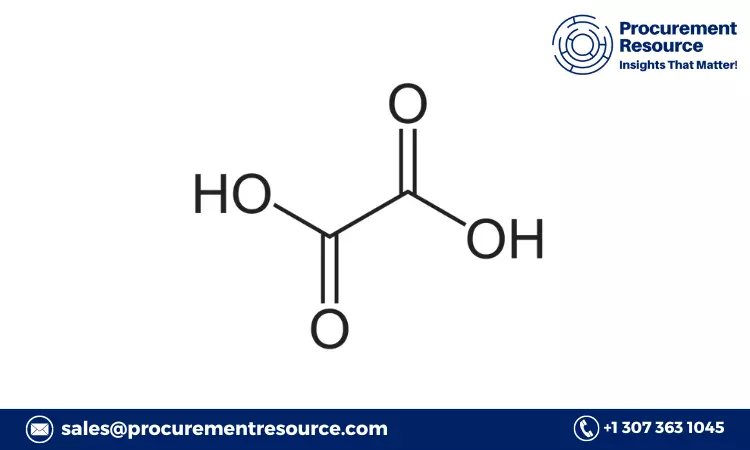Introduction
Oxalic acid, a versatile organic compound with various industrial applications, is widely used in sectors such as agriculture, textiles, and pharmaceuticals. Understanding the intricacies of the oxalic acid production process and associated costs is crucial for stakeholders in the industry. In this press release, we delve into the Oxalic Acid Production Process with a comprehensive cost analysis, offering valuable insights for businesses.
Request Free Sample – https://www.procurementresource.com/production-cost-report-store/oxalic-acid/request-sample
Procurement Resource Assessment Oxalic Acid Production Process
The oxalic acid production process begins with a meticulous procurement resource assessment. This involves evaluating raw material sources, production technologies, energy requirements, transportation logistics, and environmental considerations. By conducting a thorough assessment, producers can optimize resource procurement, enhance production efficiency, and ensure sustainability.
Product Chloride
Chloride compounds are not directly involved in the primary oxalic acid production process. However, chloride-based compounds may be used in secondary processes or as by-products in chemical synthesis. Ensuring the quality and purity of oxalic acid products is essential for maintaining integrity and performance in end-use applications.
Market Drivers
Several factors act as drivers shaping the oxalic acid market landscape. These include fluctuations in demand for downstream products such as dyes, bleaches, and metal cleaning agents, advancements in industrial chemical applications, environmental regulations governing chemical manufacturing processes, and shifts in consumer preferences towards eco-friendly and sustainable products. Understanding these market drivers is crucial for forecasting market trends, identifying growth opportunities, and mitigating risks.
Raw Materials Requirements
The primary raw materials required for oxalic acid production include biomass-derived materials such as sugar, starch, or cellulose. These raw materials serve as feedstocks for oxalic acid synthesis via chemical reactions such as oxidation or hydrolysis. Other materials such as catalysts, solvents, and purification agents may also be required depending on the production method employed. Additionally, energy sources such as electricity or steam are essential for various stages of the production process.
Costs and Key Process Information
Oxalic acid production costs are influenced by factors such as raw material prices, energy consumption, labor expenses, equipment maintenance, transportation costs, and regulatory compliance. Key process information, including reaction efficiency, yield optimization, purification methods, and waste management, also impacts production costs. Analyzing these factors allows producers to optimize production processes, enhance cost-effectiveness, and maintain competitiveness in the market.
Looking for an Exhaustive and Personalized Report
For businesses seeking an exhaustive and personalized oxalic acid production process cost report tailored to their specific needs and objectives, our team offers comprehensive analysis and insights. Our reports encompass detailed cost breakdowns, market analysis, procurement strategies, and future outlooks, providing valuable information to substantiate business decisions.
In conclusion, understanding the oxalic acid production process and associated costs is crucial for stakeholders in the industry. By conducting thorough assessments, analyzing market drivers, and optimizing production processes, businesses can enhance efficiency, reduce costs, and capitalize on market opportunities.
For businesses seeking a detailed oxalic acid production process cost report to substantiate their operations and strategic initiatives, our team is dedicated to providing personalized and comprehensive analysis. Contact us today for more information.
About Us:






